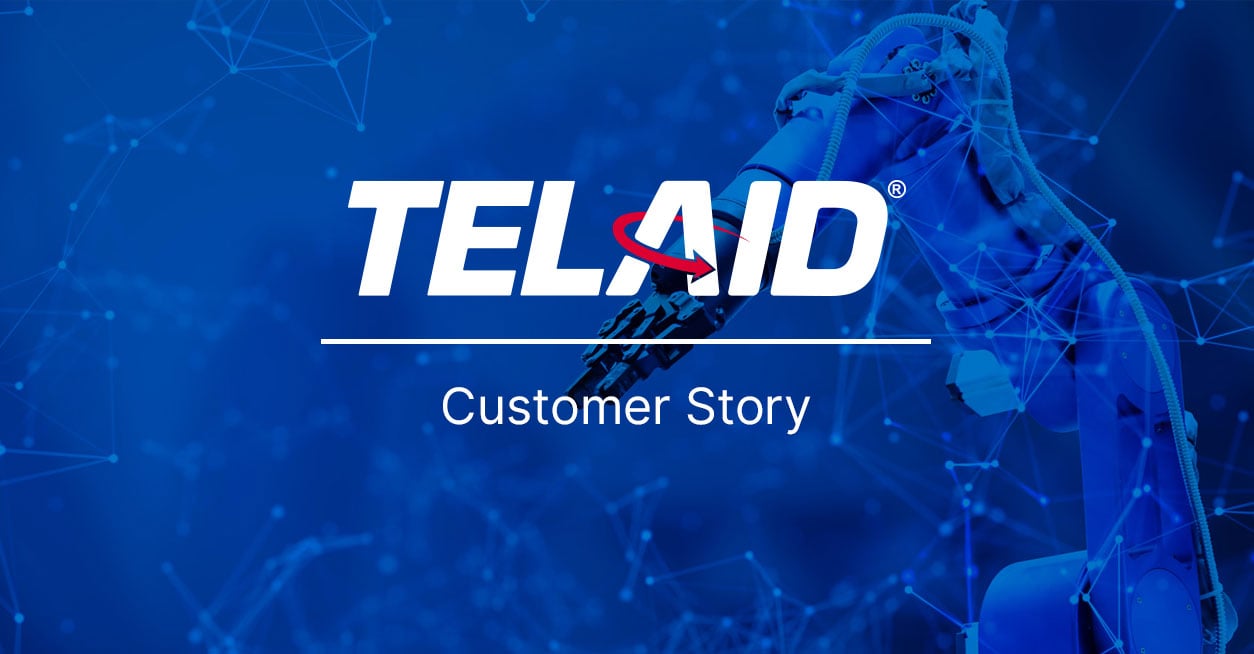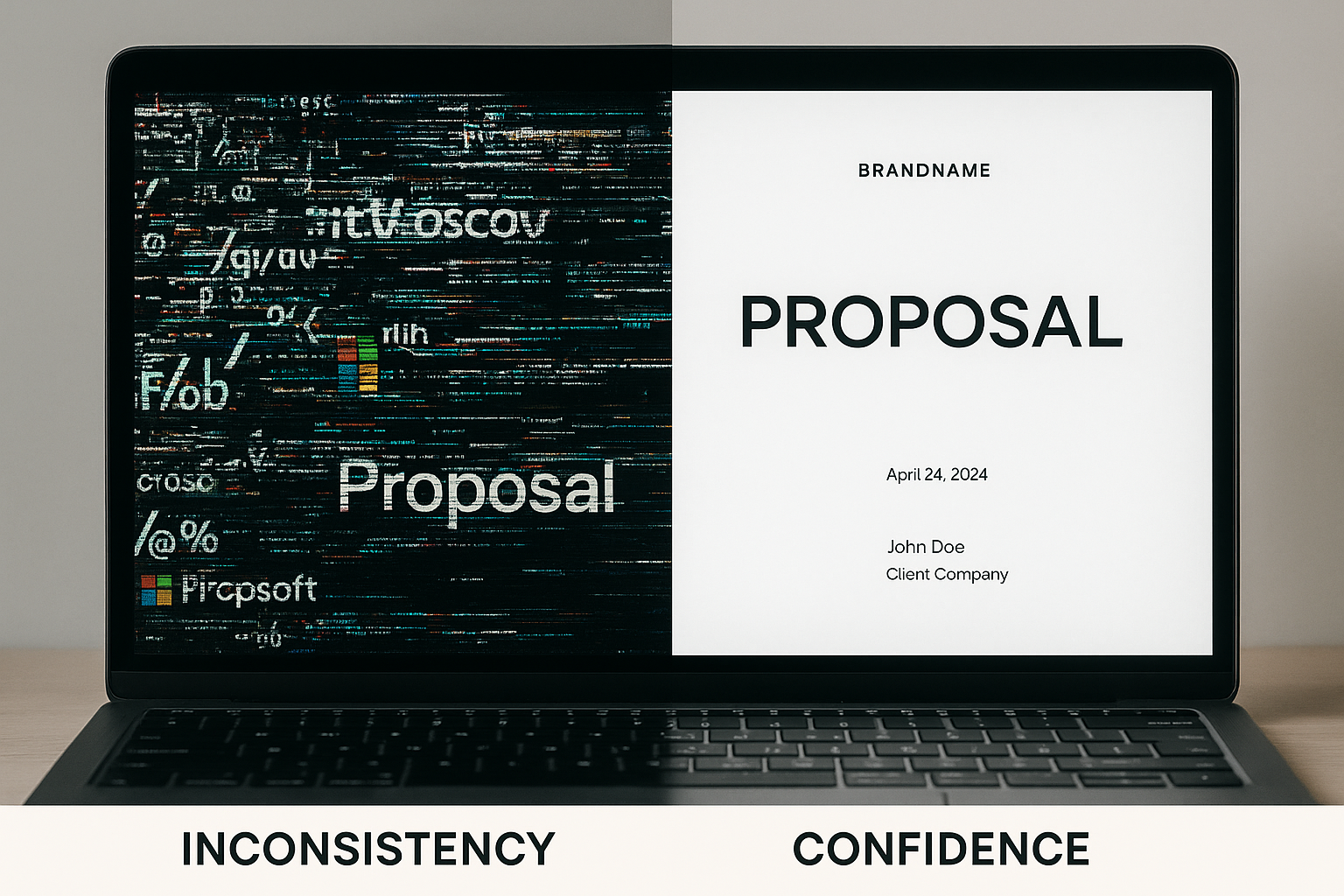Stop the Copy-Paste Chaos: How to Cut Proposal Creation Time by 80%
 Talewind
·
3 minute read
Talewind
·
3 minute read
Proposals should close deals, not drain hours. Yet for most proposal managers, every new request triggers the same cycle: copy-paste from old decks, reformat slides at midnight, chase approvals over email, and hope you did not leave another client’s name in there.
That is not strategy. That is chaos. And it is costing your team more than time.
The Real Cost of Manual Proposal Creation
Let’s do the math:
- 4+ hours per proposal × 50 proposals/month = 200+ hours
- At $75/hour loaded cost, that is $15,000/month burned on manual work
But the hidden costs are even greater:
- Deals slow down when buyers wait weeks for proposals
- Win rates drop when messaging is inconsistent or sloppy
- Morale tanks when skilled professionals become formatting machines
- Errors multiply when deadlines collide with manual edits
Quick Self-Check: Is This You?
But the hidden costs are even greater:
- Deals slow down when buyers wait weeks for proposals
- You copy-paste content from old proposals at least twice a week
- Approvals happen over email or Slack instead of a workflow
- You have lost track of “the latest version” more than once this month
Why "Just Another Tool" Will Not Save You
Templates, content libraries, and doc-gen software are common attempts to solve the problem. The result is usually a shinier way to copy-paste.
Here is the truth: automation without orchestration just digitizes the mess.
- Content still lives in silos
- Reps still toggle between systems
- Approvals still chase inboxes
The real problem is not the lack of technology. It is the lack of an orchestrated process.
Gartner calls this out clearly. Organizations that build a unified process automation architecture, where workflows are orchestrated across teams and systems, gain the scalability, speed, and efficiency that fragmented tools cannot deliver.¹
Customer Spotlight: How AFCO Cut Proposal Time By 80%
When AFCO’s sales leaders gathered in Las Vegas, frustration boiled over. Their Senior VP, Scott Jimenez, saw 15 team members produce 15 completely different proposals. Formatting was inconsistent, pricing varied, and every proposal required hours of manual work across finance, legal, and sales.
“It was the Wild West,” Scott recalled. “I was spending hours pulling data just to get a single proposal ready.”After partnering with Talewind, AFCO transformed its process. By structuring content, automating pricing, and guiding inputs through a single system, proposals that once devoured days now take as little as 15 minutes. The results:
- 80% reduction in proposal prep time
- Standardized pricing that improved margins
- Positive buyer feedback thanks to a streamlined showroom experience
“Now, instead of hours behind a desk, our team can create professional proposals in minutes and get back in the field,” Scott shared.
Read the full AFCO case study here
The 80% Solution: Orchestration, Not Joust Automation
The organizations that cut proposal time by 80% do not just automate steps. They orchestrate the entire flow:
- Structured Content Architecture
One source of truth, logic-driven, always up to date. - Guided Input Experience
Reps answer 10–15 deal questions, and the system builds the proposal. - Automated Approval Workflows
Rules trigger approvals instantly, with clear owners and escalation paths. - Real-Time Collaboration
SMEs and stakeholders contribute in one place without version control nightmares.
Your proposal process should be a revenue engine, not a revenue killer.
What 15-Minute Proposals Actually Look Like
The organizations that cut proposal time by 80% do not just automate steps. They orchestrate the entire flow:
- Reps answer deal questions
- Content auto-populates from pre-approved sources
- Pricing integrates seamlessly
- Docs generate instantly in branded formats
- Approvals happen in-system, not in inboxes
The outcome: professional, compliant proposals in minutes.
The Partnership Piece Nobody Talks About
Here is the catch: setup is everything.
Even the best platform fails if it is not configured to your content, your workflows, and your approvals. That is why companies that achieve the 80% reduction do not attempt it alone. They partner with experts who can align process, technology, and people.
Your Next Steps
Do not let another quarter slip away to copy-paste chaos. Start small:
- Audit your process → track proposal time for two weeks
- Spot the bottlenecks → content hunting, approvals, or formatting
- Map your ideal workflow → imagine proposals that “just work”
Every hour your team spends patching documents is an hour they are not selling, and an hour your buyers are left waiting.
Proposals should be your fastest revenue driver, not your slowest bottleneck. Time to stop the chaos and start winning.
See how Talewind orchestrates proposals
¹ Gartner. Process Automation Architecture: How to Build for Scale and Efficiency, 2023. Link



